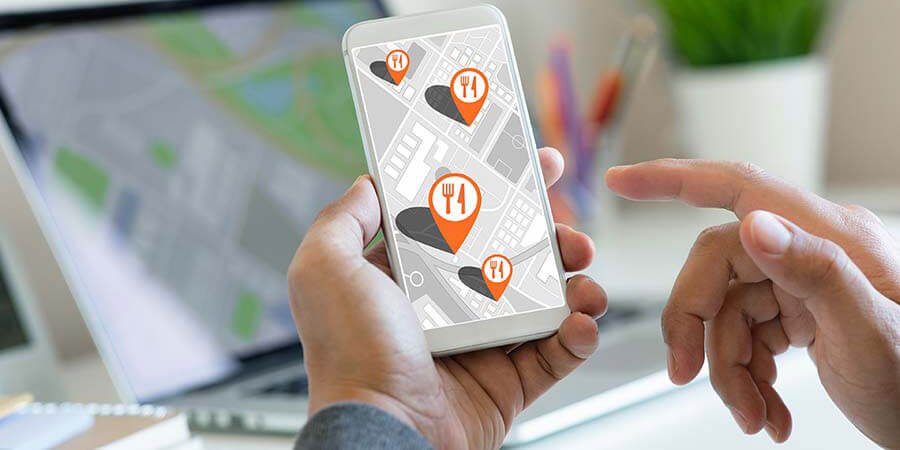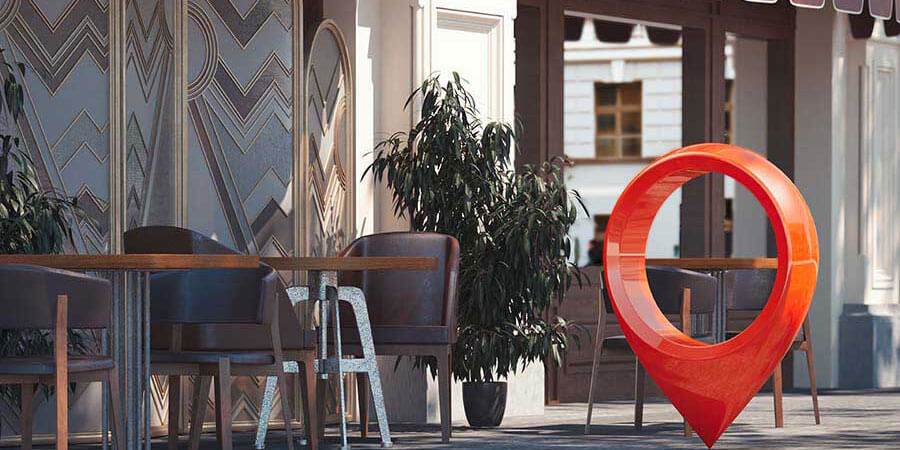How to Choose the Right Restaurant Location in 5 Steps

You’ve doubtless heard the expression “location, location, location” applied to real estate. There’s a reason that this is commonly repeated. Where you buy real estate — whether it’s a restaurant building or a house — is important!
We can’t overstate the relevance of choosing a location for your restaurant strategically, based on research, data, and careful planning.
- CNBC estimates that 60% of restaurants fail during the first year, with a restaurant’s current location playing a major role in these new businesses shuttering.
- The National Restaurant Association estimates that one in three restaurants will fail during their first year.
While other studies on restaurant failure are far more optimistic, do you really want to take a chance by choosing a restaurant location without having done your homework? The answer is no.
It’s with that in mind that we provide five actionable steps you can take to ensure that you’re choosing the best location for your restaurant.
1. Do Your Research
Most of us have one of them in our town — a restaurant that's set up to fail from inception, thanks to a location that seems “doomed” or “cursed”.
Superstition aside, there’s likely a reason, or combination of reasons, that such restaurants fail. Maybe they don’t get enough foot traffic. Maybe their location is hard to spot from the road. Maybe over time, people start to associate the location with “bad juju”, creating a feedback loop or self-fulfilling prophecy.
Regardless of the reason, the phenomenon of the “doomed restaurant” emphasizes why it’s so important to conduct market research before choosing a restaurant location.
Walk in blind, and you could be setting yourself up for failure. Do your homework, and it could quite literally save your business before you even open your doors. Here are five ways doing market research is helpful when opening your restaurant:
- Puts consumers first
- Reaffirms the importance of focusing on customer needs as opposed to arbitrary personal preferences
- Keeps you relevant
- Minimizes risks
- Defines your audience clearly
2. Assess the Location's Accessibility & Visibility
Prime locations, such as those in the heart of downtown areas, generally cost more to buy or rent than those on the periphery of areas with a ton of foot traffic. Therefore it’s important to weigh cost vs. a location’s accessibility and visibility to determine if it's right for your restaurant and budget.
Keeping that in mind, here are some questions to ask yourself when assessing a restaurant’s visibility and accessibility:
- How accessible is the location you're choosing? Does it get a lot of foot traffic? Can people see it easily from the street?
- How close is your location to major roads and highways?
- Is there parking available nearby or onsite? Is it enough? If not, is your potential location easily accessible via public transportation?
- If you’re buying a restaurant with equipment in it already, do you need to buy more?

3. Consider These 9 Factors When Analyzing the Competition
“How to Conduct a Restaurant Competitive Analysis in 9 Simple Steps”, written by Restaurant365 Marketing Manager Jennifer Day, outlines nine important things to consider in order to conduct a thorough competitor analysis:
- Who are your competitors?
- How are your competitors showing up online and on social media?
- What menu items are your competitors offering & what is their menu pricing structure?
- Observe your competitor’s customers.
- Observe your competitor’s employees to see how they behave.
- See what type of technologies your competitors are using & assess if it is providing them with potential competitive advantages.
- Note any areas in which your competitors are excelling, from ambiance to cleanliness to quality of food to other unique offerings.
- Note any areas in which your competitors are struggling. Turn those into strengths for your restaurant business model.
- Find gaps & use them to stand out.
4. Define Your Unique Selling Proposition (USP)
What will make your restaurant stand out from the crowd? How does location factor into this decision? Is there a way to better leverage location to achieve a more unique business concept?
This is the heart of what you should be considering when defining your unique selling proposition, or your unique competitive advantage.
Once you find gaps while conducting a competitor analysis, you want to use them to stand out, which is essentially what having a unique selling proposition entails. It’s the “secret sauce” that makes your restaurant concept truly unique, and hopefully, what keeps customers coming back time and time again.
5. Assess Local Culture Fit
Don’t forget to analyze how well what your competitors are offering is (or isn’t) localized for your community, its culture, and its preferences.
For instance, if you’re opening a taco joint in an urban area, is your competitor doing really well because it offers a menu with fusion-style cuisine in a sea of taco joints that offer just the basics to an audience with a sophisticated and adventurous palate?
Conversely, say you’re looking into opening a taco joint in a fairly rural area, but you have a competitor who has been extremely successful thanks to deciding that since people in your area don’t dine out much, opening a food truck that’s open during lunch hours and could be driven to different hotspots at different times of day was the best option.
If the people in the location you’re thinking of choosing don’t fit your business model, and you don’t want to change your restaurant concept, maybe you should consider a different location.
Prepare Your Restaurant for Success With Our Commercial Equipment
Choosing the right restaurant location sets you up for success. But without the right restaurant equipment in that location, you’ll be ill-prepared to put out a high-quality menu for your patrons. So be sure to choose your restaurant equipment wisely, too.
Outfit your restaurant with high-quality commercial restaurant equipment from GoFoodservice today.
Share This!